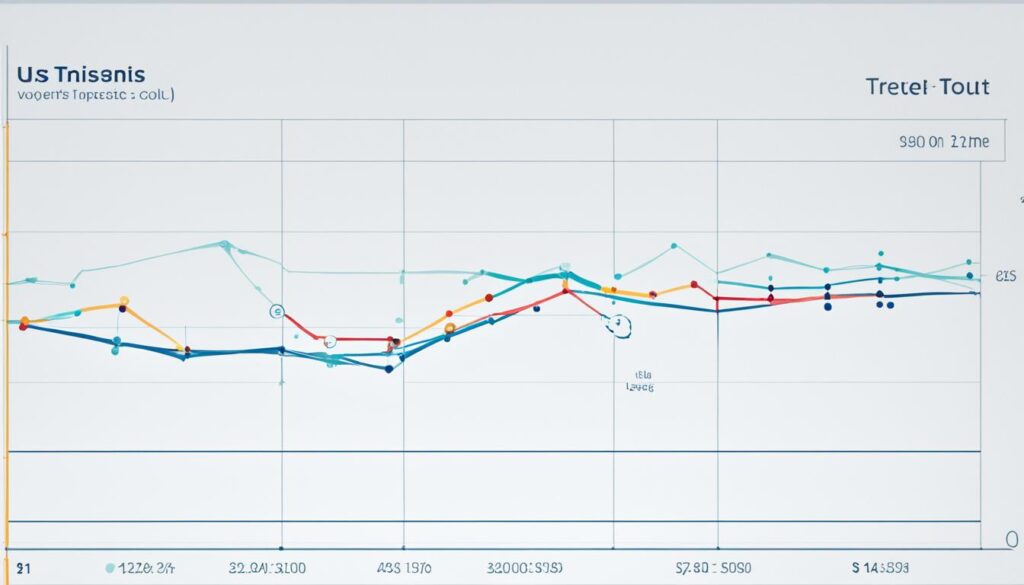How can businesses in the Philippines make better and more informed decisions in today’s fast-paced and competitive landscape? Is there a way to stay ahead of the curve and proactively respond to challenges and opportunities? The answer lies in harnessing the power of real-time field data.
In this article, we will explore the pivotal role of real-time data in enhancing decision-making processes for businesses in the Philippines. We will dive into the world of business analytics and uncover how real-time field data can empower proactive responses. Join us as we delve into the challenges and benefits of integrating real-time data into decision-making processes and discover how businesses are thriving with real-time analysis.
By understanding the benefits and best practices of leveraging real-time field data, companies in the Philippines can unlock the potential of their data to drive strategic decision-making and gain a competitive advantage.

Key Takeaways:
- Real-time field data plays a pivotal role in modern business analytics and decision-making.
- By harnessing the power of real-time field data, businesses can make proactive responses and seize opportunities.
- Technology has revolutionized field data collection, enabling businesses to collect and analyze data accurately and efficiently.
- Real-time data visualization enhances decision-making by providing clear and intuitive representations of complex data.
- When combined with AI, real-time field data analytics can automate analysis and drive quick decision-making.
The Pivotal Role of Real-Time Data in Modern Business Analytics
Real-time data plays a crucial role in modern business analytics, providing accurate and up-to-date information for effective decision-making. By leveraging real-time data analytics, businesses can make informed decisions based on the most current information available, gaining a competitive advantage in today’s fast-paced business landscape.
Understanding Real-Time Data Analytics
In the world of modern business analytics, real-time data analytics involves utilizing advanced tools and technologies to capture and analyze data in real-time. This allows businesses to access immediate insights and trends, empowering them to respond swiftly to market changes, identify opportunities, and mitigate risks. With real-time data analytics, businesses can stay ahead of the competition and make proactive decisions that drive growth and success.
The Journey from Data Collection to Business Intelligence
The journey from data collection to business intelligence is a critical process that transforms raw data into meaningful insights. It includes the careful collection of relevant data, its transformation into valuable information through analysis, and the utilization of these insights to drive strategic decision-making. By integrating real-time data into this journey, businesses can obtain accurate and timely insights that fuel their decision-making processes.
With modern business analytics powered by real-time data, companies can gain a comprehensive understanding of their operations, customers, and market trends. They can uncover patterns, make data-driven predictions, and optimize their processes to achieve business objectives more effectively. Real-time data revolutionizes the way businesses analyze information, enabling them to make smarter decisions that drive growth and success.
How Real-Time Field Data Empowers Proactive Responses
Real-time field data plays a vital role in empowering businesses to take proactive measures and make data-driven decisions. By monitoring and analyzing real-time data, companies can identify and address issues before they escalate, ensuring swift and effective responses. This enables businesses to stay ahead of the competition and respond effectively to changes in their industry.
Real-time field data provides businesses with timely and accurate information that enables them to detect trends, patterns, and anomalies that may require immediate attention. Armed with this valuable insight, businesses can take proactive measures to mitigate risks, optimize operations, and seize opportunities.
With real-time field data, businesses in the Philippines can make informed decisions based on the most up-to-date information available. This empowers them to take immediate action in response to emerging challenges and capitalize on new opportunities as they arise.
The ability to respond swiftly and effectively to changes in the industry is crucial for businesses to maintain a competitive edge. Real-time field data empowers businesses in the Philippines to make proactive responses, ensuring they stay ahead of the competition and drive growth and success.

Transforming Field Data Collection with Technology
Field data collection has been revolutionized by technology, empowering businesses to collect and utilize data more accurately and efficiently. In today’s digital age, companies can leverage the power of mobile devices and cloud-based solutions to enhance the accuracy, speed, and accessibility of field data.
Utilizing Mobile Devices for Enhanced Field Data Accuracy
The use of mobile devices in field data collection has significantly improved data accuracy by eliminating manual data entry and reducing human error. Mobile apps and tools enable data to be recorded directly in the field, ensuring real-time updates and minimizing the time lag between data collection and analysis. This real-time data capture not only increases data accuracy but also provides immediate access to the most up-to-date information for decision-making.
Adopting Cloud-Based Solutions for Field Data Aggregation
Cloud-based solutions have transformed the process of field data aggregation, allowing businesses to securely store and access data from anywhere at any time. By leveraging cloud technology, companies can centralize and consolidate field data, enabling seamless collaboration among team members and facilitating efficient decision-making processes. Cloud-based solutions also offer scalability and flexibility, allowing businesses to adapt their data storage and analysis capabilities as needs evolve.
Leveraging Real-Time Data Visualization for Clarity
Real-time data visualization is a powerful tool that enhances decision-making by providing clear and intuitive representations of complex data. By visualizing real-time data, businesses can quickly identify trends, patterns, and outliers, enabling them to make faster and more informed decisions.
Data visualization also supports data exploration and discovery, allowing decision-makers to interact with the data and gain deeper insights. With the ability to easily interpret and understand real-time data through visualization, businesses can improve their decision-making processes and drive better outcomes.
To illustrate the effectiveness of real-time data visualization, consider the following example:
“Thanks to Tarkie, now we get our nationwide sales and inventory reports in real-time! As our store check automation platform, Tarkie gave us visibility on the performance of our 750 stores.” – Joonnie Centeno, Uratex Trade Services Manager
Visualizing the data allowed Uratex to quickly identify the problem, leading to a timely resolution and positive outcomes.
Real-time data visualization also helps decision-makers communicate insights effectively to stakeholders and teams. By presenting data in a visually engaging manner, decision-makers can convey complex information in a manner that is easily understandable and accessible to a wider audience.

As the image above demonstrates, real-time data visualization can transform raw data into clear and meaningful visual representations, enabling decision-makers to gain a comprehensive view of their business operations.
In summary, leveraging real-time data visualization empowers businesses in the Philippines to enhance decision-making by providing clarity and facilitating a deeper understanding of complex data. By harnessing the power of visualization, businesses can identify insights, communicate effectively, and drive better outcomes.
Real-Time Field Data: Harnessing Instant Insights for Strategic Advantage
In today’s fast-paced business environment, access to real-time field data has become a vital asset for companies in the Philippines. The ability to gather and analyze data in real-time provides businesses with instant insights that can be leveraged for a strategic advantage in decision-making.
By having real-time data at their fingertips, decision-makers can stay updated with the most current information and make timely decisions based on accurate and relevant data. This enables businesses to respond quickly to changing market conditions, identify emerging opportunities, and effectively mitigate risks.
The Competitive Edge Gained from Instant Data Access
Instant access to real-time field data gives businesses a competitive edge by providing them with the information they need to make proactive and informed decisions. This allows companies to stay ahead of their competitors and seize opportunities that arise in real-time.
With instant data access, businesses can:
- Monitor market trends and customer behavior in real-time
- Identify and respond to potential issues or challenges promptly
- Optimize operations and resource allocation based on up-to-date information
By leveraging instant insights gained from real-time field data, businesses can position themselves as industry leaders and gain a competitive edge in their respective markets.
Addressing the Challenges of Field Data Management
While real-time field data offers numerous benefits, businesses often face challenges in effectively managing and utilizing this valuable resource. In this section, we will explore two critical areas that organizations need to address to maximize the value of their field data: solving integration issues across disparate data systems and implementing strategies for ensuring data quality and security.
Solving Integration Issues Across Disparate Data Systems
One of the significant challenges businesses encounter when leveraging real-time field data is integrating data from various sources and systems. Disparate data systems often have different formats, structures, and protocols, making it difficult to seamlessly access and analyze real-time data.
To overcome integration issues, businesses can consider the following strategies:
- Standardize data formats: Adopting standardized data formats ensures compatibility and simplifies the integration process across different systems.
- Implement data integration platforms: Utilizing data integration platforms or middleware enables seamless data flow and synchronization between disparate systems, facilitating real-time data access and analysis.
- Establish data governance practices: Developing robust data governance practices helps define data standards, policies, and procedures, ensuring data consistency and integrity across systems.
By addressing integration challenges, businesses can establish a cohesive and unified view of real-time field data, enabling more accurate analysis and decision-making.
Strategies for Ensuring Data Quality and Security
Another critical aspect of managing field data is ensuring its quality and security. Real-time data is only valuable if it is accurate, reliable, and protected from unauthorized access.
To ensure data quality and security, organizations can implement the following strategies:
- Implement data validation processes: Regularly validate field data to identify and correct any inaccuracies or inconsistencies, ensuring data reliability.
- Establish data access controls: Implement robust authentication and authorization mechanisms to control access to real-time field data, protecting it from unauthorized use or breaches.
- Encrypt data during transmission and storage: Utilize encryption technologies to secure data while in transit and at rest, safeguarding it from potential threats.
- Regularly back up data: Implement regular data backup procedures to ensure data availability and recoverability in case of system failures or data loss.
By implementing these strategies, businesses can maintain the integrity and confidentiality of their real-time field data, instilling confidence in decision-making processes.

Sector-Specific Impacts of Real-Time Data Integration
Real-time data integration has significant impacts on various industries, including manufacturing, logistics, healthcare, and retail. By seamlessly integrating real-time data into their operations, businesses in these sectors can unlock a wide range of benefits that drive growth and success.
In the manufacturing industry, real-time data integration enables businesses to optimize resource allocation, streamline production processes, and minimize downtime. By constantly monitoring data from sensors and equipment, manufacturers can proactively identify and address issues, improve efficiency, and enhance overall productivity.
In the logistics industry, real-time data integration revolutionizes supply chain management. By accessing real-time data on inventory levels, transportation routes, and delivery status, businesses can optimize logistics operations, reduce costs, and improve customer satisfaction. Real-time data integration also enables optimal fleet management, route planning, and inventory replenishment, ensuring efficient and timely delivery.
Moreover, real-time data integration has a profound impact on the healthcare industry. By leveraging real-time data from wearable devices, electronic health records, and medical devices, healthcare providers can enhance patient care and outcomes significantly. Real-time data integration allows for better monitoring of patient conditions, early detection of abnormalities, and timely interventions, improving diagnosis, treatment, and overall patient satisfaction.
In the retail industry, real-time data integration empowers businesses to optimize inventory management, personalize customer experiences, and drive sales. By integrating real-time data from point-of-sale systems, online platforms, and customer behavior tracking, retailers can gain valuable insights into consumer preferences, trends, and demand patterns. This enables them to optimize inventory levels, offer personalized recommendations, and deliver targeted marketing campaigns that drive customer engagement and loyalty.
Understanding the sector-specific impacts of real-time data integration is crucial for businesses in the Philippines. By recognizing and leveraging the unique opportunities and benefits that real-time data integration offers, companies can make informed decisions, optimize operations, and gain a competitive advantage in their respective industries.
The Synergy of Real-Time Data Analytics and AI in Decision-Making
The synergy between real-time data analytics and artificial intelligence (AI) brings significant benefits to decision-making processes. By combining the power of real-time data analytics with AI technologies, businesses can enhance their decision-making capabilities and drive better outcomes.
Automating Analysis with AI for Quick Decision-Making
AI technology enables businesses to automate the analysis of vast amounts of real-time data, allowing for quick and efficient decision-making. By leveraging AI algorithms and machine learning capabilities, businesses can process and analyze data at a speed and scale that would be impossible for humans alone. This empowers decision-makers to gain actionable insights in real-time, enabling them to make faster and more informed decisions.
Predictive Maintenance and Real-Time Alerts Driven by AI
One of the key applications of AI in conjunction with real-time data analytics is predictive maintenance. AI algorithms can analyze real-time data from various sources to identify potential issues and anomalies, allowing businesses to take proactive measures. By detecting potential equipment failures or maintenance needs in advance, businesses can optimize operational efficiency, reduce downtime, and minimize costs.
In addition, AI-driven real-time alerts ensure that businesses can proactively respond to critical events. By continuously monitoring real-time data, AI algorithms can detect patterns or anomalies that require immediate attention, allowing decision-makers to take timely actions and mitigate risks efficiently.

The integration of AI with real-time data analytics revolutionizes decision-making processes. By automating analysis, predicting maintenance needs, and providing real-time alerts, businesses can make smarter and more efficient decisions, improving operational performance and achieving their business objectives more effectively.
Building a Robust Real-Time Data Reporting Framework
To effectively utilize real-time field data, businesses must establish a robust data reporting framework. This framework encompasses key components that enable effective and timely reporting of data. Additionally, implementing best practices for creating interactive data dashboards ensures that decision-makers have immediate access to relevant and actionable information in real-time. By adopting these strategies, businesses can optimize their use of real-time field data and make informed decisions that drive success.
Key Components for Effective and Timely Data Reporting
The key components of an effective data reporting framework involve:
- Data Aggregation: The process of collecting and consolidating real-time field data from various sources into a central repository.
- Data Visualization: The representation of data in visual formats such as charts, graphs, and maps to facilitate easy understanding and analysis.
- Data Analysis: The examination of real-time field data to identify trends, patterns, and insights that inform decision-making.
- Data Delivery Mechanisms: The methods and tools used to disseminate real-time field data to decision-makers in a timely manner.
By incorporating these key components into their data reporting framework, businesses can ensure that real-time field data is effectively collected, analyzed, and delivered to the relevant stakeholders, enabling them to make informed decisions.
Best Practices for Creating Interactive Data Dashboards
In addition to the key components, implementing best practices for creating interactive data dashboards is crucial for maximizing the value of real-time field data. Some of these best practices include:
- Clearly define objectives: Determine the specific goals and objectives of the data dashboard to ensure that it provides the most relevant and actionable information.
- Choose the right visualizations: Select appropriate visualizations that effectively communicate the insights derived from real-time field data and facilitate quick comprehension.
- Ensure data accuracy and quality: Regularly validate and verify the accuracy and quality of the real-time field data to maintain the integrity of the dashboard.
- Prioritize user experience: Design the data dashboard with user-friendly interfaces and intuitive navigation to enhance user experience and facilitate easy exploration of data.
- Enable customization and interactivity: Allow users to customize the dashboard according to their specific needs and provide interactive features that enable them to drill down into the data for detailed analysis.
By following these best practices, businesses can create interactive data dashboards that provide decision-makers with the most relevant and actionable real-time field data, empowering them to make informed decisions promptly.
Conclusion
The use of real-time field data has become a game-changer in decision-making for businesses in the Philippines. By harnessing the power of real-time data analytics, organizations can make informed decisions based on accurate and up-to-date information. This enables them to have a competitive edge and drive success in today’s dynamic business landscape.
Real-time field data offers numerous benefits for businesses. It empowers proactive responses by providing timely and accurate information to identify and address issues before they escalate. By monitoring and analyzing real-time data, companies can detect trends, patterns, and anomalies that require immediate attention, enabling them to make proactive decisions and mitigate risks effectively. Additionally, real-time field data allows businesses to transform their field data collection processes with technology, ensuring accurate and efficient data capture.
While the integration of real-time field data brings significant advantages, businesses must also address challenges related to data management and ensure data quality and security. Solving integration issues across disparate data systems is crucial to enable seamless access and analysis of real-time data from various sources. Implementing strategies for ensuring data quality and security is essential to maintain the integrity and reliability of real-time field data.
By leveraging the sector-specific impacts of real-time data integration and embracing the synergy of real-time data analytics and AI, businesses can gain a competitive advantage and drive success in their respective industries. Building a robust real-time data reporting framework and following best practices for data reporting enable businesses to optimize their decision-making processes and enhance their overall performance. In conclusion, the use of real-time field data enhances decision-making capabilities and empowers businesses in the Philippines to thrive in today’s dynamic business landscape.
FAQ
What is the role of real-time data in modern business analytics?
Real-time data plays a pivotal role in modern business analytics by providing accurate and up-to-date information for decision-making. It allows businesses to make informed decisions based on the most current information available, leading to improved strategic decision-making processes.
How does real-time field data empower proactive responses?
Real-time field data empowers proactive responses by providing businesses with timely and accurate information to identify and address issues before they escalate. By monitoring and analyzing real-time data, companies can detect trends, patterns, and anomalies that may require immediate attention, enabling them to take proactive measures and make data-driven decisions.
How has field data collection been transformed with technology?
Field data collection has been revolutionized by technology, with mobile devices and apps enhancing accuracy by eliminating manual data entry and reducing human error. Cloud-based solutions further streamline the process by securely storing and accessing data from anywhere, facilitating collaboration and efficient decision-making.
What is the power of real-time data visualization in decision-making?
Real-time data visualization is a powerful tool that enhances decision-making by providing clear and intuitive representations of complex data. It allows businesses to quickly identify trends, patterns, and outliers, enabling them to make faster and more informed decisions based on real-time insights.
How does real-time field data provide strategic advantage?
Real-time field data provides businesses with instant insights that can be leveraged for strategic advantage. With instant data access, decision-makers can stay updated and make timely decisions based on the most current information available. This gives businesses a competitive edge by enabling them to respond quickly to changing market conditions and capitalize on emerging opportunities.
What are the challenges of effectively managing real-time field data?
Businesses face challenges in effectively managing and utilizing real-time field data, including solving integration issues across disparate data systems and ensuring data quality and security. By addressing these challenges and implementing effective data management practices, businesses can maximize the value of real-time field data and optimize their decision-making processes.
What are the sector-specific impacts of real-time data integration?
Real-time data integration has sector-specific impacts on various industries such as manufacturing, logistics, healthcare, and retail. By seamlessly integrating real-time data into their operations, businesses in these sectors can optimize resource allocation, improve supply chain efficiency, enhance patient care, and optimize inventory management.
How does AI enhance decision-making capabilities with real-time data analytics?
The synergy of AI and real-time data analytics significantly enhances decision-making capabilities. Automating analysis with AI enables businesses to process and analyze vast amounts of real-time data, providing actionable insights for quick decision-making. AI-powered predictive maintenance and real-time alerts enable businesses to proactively respond to critical events and make timely decisions.
What are the key components for building a robust real-time data reporting framework?
Key components for effective and timely data reporting include data aggregation, data visualization, data analysis, and data delivery mechanisms. Implementing best practices for creating interactive data dashboards ensures that decision-makers have access to the most relevant and actionable information in real-time.
